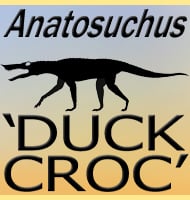Kepodactylus
In Depth The discovery of the pterosaur Kepodactylus was actually a by-product of the recovery of a Stegosaurus in Garden Park, Colorado. This is how Kepodactylus got a name meaning ‘garden finger’. The species name insperatus is referenced to the discovery of Kepodactylus being a pleasant surprise to the dig team. Further Reading – A … Read more
